We explain what ants are, what their habitat and food are like. Also, what are its general characteristics, reproduction and more.
What are ants?
Ants are a type of insect belonging to the Formicidae family . They are zoologically related to bees and termites, the so-called eusocial insects . They are famous for their cooperative life and industriousness.There are about 10,000 known species of ants distributed in almost all areas of the plant (except Antarctica ), although they prefer warm environments. It is estimated that there are around one thousand trillion (10 15 ) and ten thousand trillion (10 16 ) of ants on our planet , 15 to 25% of the total existing biomass .
Ants are small insects, ranging between 2 and 25 millimeters and varying in color from black to brown, red or yellow. Its body is made up of a head (with antennae and chelicerae), a mesosome (thorax and first abdominal segment), and metasoma or gaster (final abdomen).
Some species have deposits of poison (stingers) or formic acid that they use as defense. In addition, they have unique morphological characteristics among insects, such as their elbow antennae, metapleural glands and two pairs of jaws: the first to hold objects (up to 50 times the weight of the animal) and the second to feed.
Origin and evolution of ants
Ants appeared in the fossil record in the Cretaceous period , more than 90 million years ago.It is estimated that at that time they were a minority species among insects (1%).
Their morphology has been found to be more similar to their cousins, bees and wasps.
Their worldwide expansion is estimated 60 million years ago , when after the adaptive radiation of the Paleogene they became a dominant life form among insects.
Where do ants live?
 Ants are present on all continents except the Antarctic , and on some large islands such as Greenland, Iceland and Polynesia. They occupy the most diverse ecological niches, oscillating between nomadism and the construction of simple and complex colonies.
Ants are present on all continents except the Antarctic , and on some large islands such as Greenland, Iceland and Polynesia. They occupy the most diverse ecological niches, oscillating between nomadism and the construction of simple and complex colonies.Their colonies are called ant hills and they can build them underground , in trees or in cracks of human constructions. They coexist with humans and in many places constitute veritable pests, destroying crops or raiding home pantries.
How do ants feed?
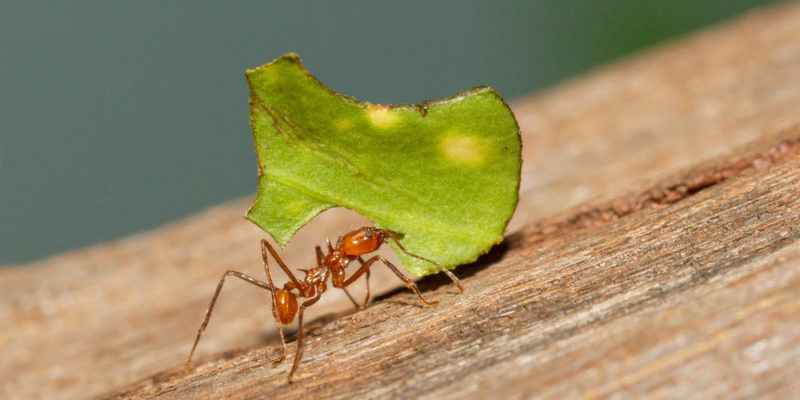
For example, leaf- cutter ants generally don't use them for food , but rather to feed a certain type of fungus that grows inside their colonies. They take care of it by providing it with only organic matter of its convenience. When the fungus emits structures called gongylidia , the ants can feed on them.
In other species, the larvae directly nourish the queen with their hemolymph (the blood of insects) through specialized glands in their thorax. This leads in many cases to the ants piercing the larvae, feeding directly on their fluids but without killing them. These species are known as "vampire ants".
Social hierarchy of ants
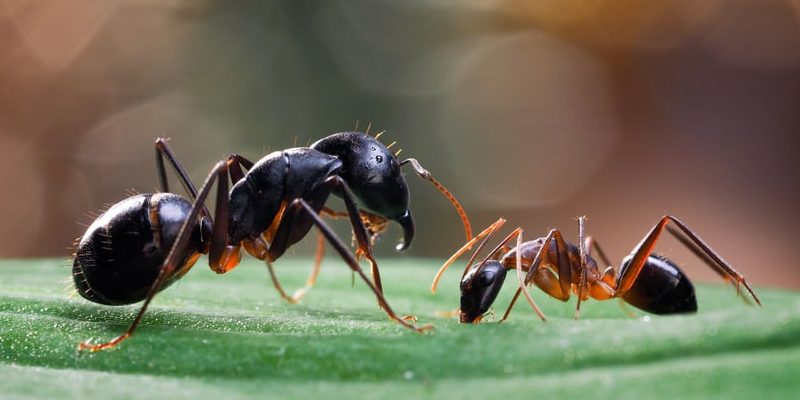
- Workers. The common ants we see collecting matter , building or repairing the entrances to the anthill. They are all sterile females, in charge of most of the tasks within the nest, such as handling the food, extending the tunnels, transporting the young or tending to the queen.
- Soldiers. Also called older or stubborn workers, since they have a more voluminous and stronger physique than their fellow workers. They are in charge of security against infiltration by other insects or attacks of any kind. However, they are not present in all species.
- Queens Each hive or colony has one or two queens, which are larger winged ants, founder of colonies. Its life span is exceptionally long (between 1 and 30 years) and its only mission in the nest is to be fertilized by a male and then to lay thousands of eggs daily from which new ant larvae will hatch.
- Males They are usually not very abundant in each colony, since their mission is simply to impregnate the queen. Once the task is completed, the male may subsist on the colony or may die, as his life span is usually quite short. In some cases they do not even see the colony form (when virgin queens or "princesses" are impregnated). They are winged ants, which can change their colony or they can stay in one and help defend it.
How do ants reproduce?
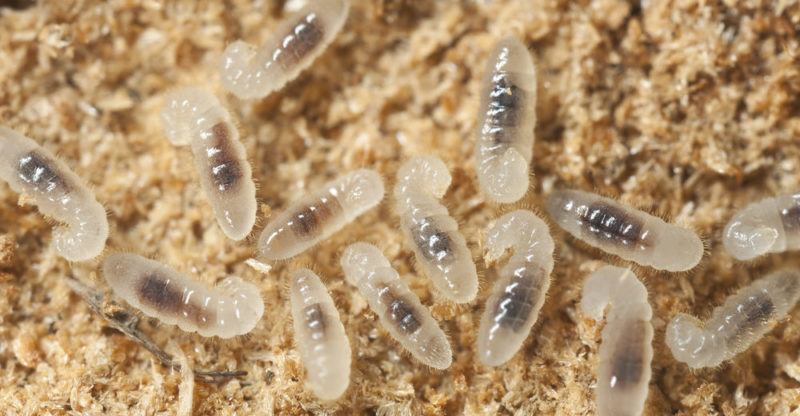 Ants produce a new generation of insects every year . For the cycle to begin, young and virgin queens ("princesses") must fly during a specific time of year to meet a male that fertilizes them, in what is called the "nuptial flight."
Ants produce a new generation of insects every year . For the cycle to begin, young and virgin queens ("princesses") must fly during a specific time of year to meet a male that fertilizes them, in what is called the "nuptial flight."Then the princess founds a new colony, for which she devours her own wings for sustenance, while laying eggs . Larvae emerge from these which, as they grow, become pupae and then adults: workers, soldiers, males or other queens. Only queens have the ability to reproduce.
How do ants communicate?
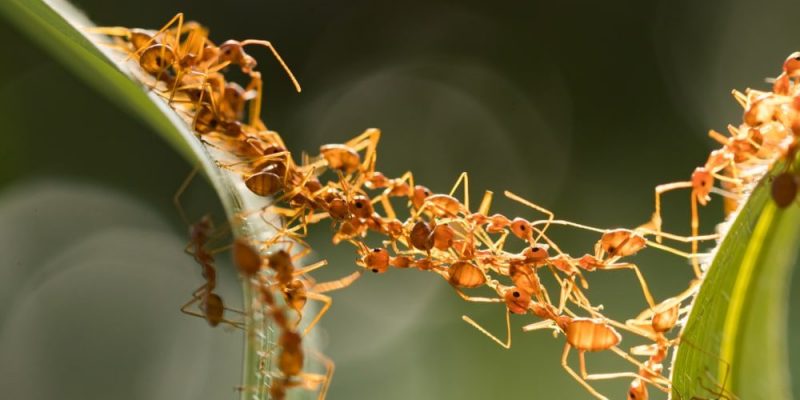 These insects have a type of chemical communication , through the secretion of pheromones perceived by their antennae. This allows queens to attract males, but also males to enter a colony and be identified as such, to be led to fertilize the queen.
These insects have a type of chemical communication , through the secretion of pheromones perceived by their antennae. This allows queens to attract males, but also males to enter a colony and be identified as such, to be led to fertilize the queen.Similarly, a male can defend his colony from others by marking them with a bite that chemically designates him as an enemy, making him prey to all the workers in the hive.
The workers also leave a trail behind them that can be read by the others, indicating the way to food, or warning them of some danger. It is for this reason that ants reach such a high level of cooperation , acting together as a supra-individual.
Poisonous ants
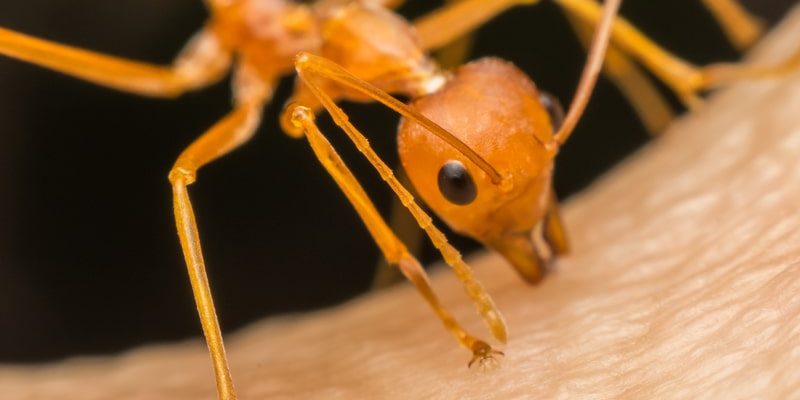 Most ants defend themselves by biting with their pincers or, if they have it (only a few species), by stinging with their stingers. Either way, they are capable of injecting or spraying their enemies with formic acid or different alkaloids.
Most ants defend themselves by biting with their pincers or, if they have it (only a few species), by stinging with their stingers. Either way, they are capable of injecting or spraying their enemies with formic acid or different alkaloids.Its sting is painful but rarely fatal . However, there are specific species whose toxins are particularly virulent or that can kill a sensitive person , in a similar way to what happens with bees.
Territoriality
Ants are extremely territorial creatures , and they tend to guard their nest surroundings fiercely. They attack any other insect or animal found there, even if they are rival colonies.In this way, a real hive war can occur , in which some invade the other to kill the queen and thus prevent the reproduction of the colony.
Predators
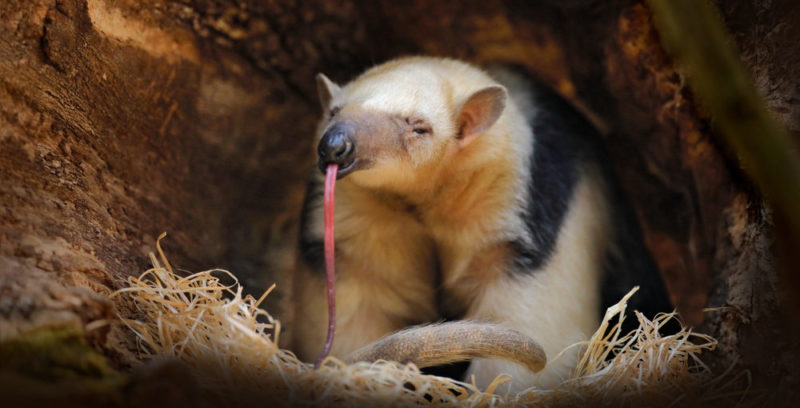 Ants support many amphibian species , including frogs, toads, and salamanders. They are also food for large mammals such as the anteater, whose long, sticky tongue allows it to attack the ant hills and devour many at once.
Ants support many amphibian species , including frogs, toads, and salamanders. They are also food for large mammals such as the anteater, whose long, sticky tongue allows it to attack the ant hills and devour many at once.However, there are also many creatures that develop commensal or symbiotic relationships with ants. For example, there are birds that take "ant baths" perching on ant hills, so that the insects rid them of lice and other parasites in their plumage.
Ants in culture
These insects have always coexisted with humans , who have made them a symbol of industry, teamwork , and sacrifice for the collective well-being. On the other hand, it is also noted for its rigid hierarchies and the anonymity of the workers.Her appearance in Aesop's fable “The Ant and the Cicada” is famous, in which she is represented as far-sighted, committed and hard-working, unlike the lazy and easy-going cicada.
In many countries ants are part of the gastronomic menu , toasted or cooked in different ways. In other places, by contrast, they are a pest to deal with, invading fields and homes. At the same time, ants can be an excellent agricultural resource in the fight against other parasitic insects.
The above content published at Collaborative Research Group is for informational and educational purposes only and has been developed by referring reliable sources and recommendations from experts. We do not have any contact with official entities nor do we intend to replace the information that they emit.
Luke is passionate about fostering student involvement and connection. He studied psychology for his major and likes learning about the past. Luke aims to specialize in artificial intelligence and cybersecurity. .
Leave a reply
Your email address will not be published. Required fields are marked *Recent post

Sport: What Is It, Types, Risks, Features, Characteristics and Examples
September 23, 2021

Dogs: Emergence, Features, Characteristics, Feeding and Breeds
September 24, 2021

Story: Definition, Elements, Structure, Features and Characteristics
September 24, 2021

Essay: Definition, Structure, Features, Characteristics, How to Do It
September 24, 2021
